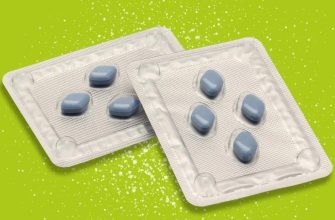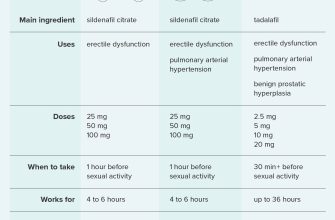Viagra, or sildenafil, primarily helps men experiencing erectile dysfunction (ED) achieve and maintain an erection. It enhances blood flow to the penis, making it easier to get and keep an erection during sexual arousal. Taking Viagra approximately 30 minutes to an hour before sexual activity allows for optimal results, although the time may vary depending on individual response.
Beyond treating ED, Viagra has clinical applications for pulmonary arterial hypertension (PAH). In this context, it relaxes blood vessels in the lungs, improving blood flow and reducing strain on the heart. This ability to relax muscles and improve circulation makes it a valuable option for patients diagnosed with PAH.
Consulting a healthcare provider is essential before using Viagra to ensure it’s appropriate for your health condition. It’s also crucial to discuss any potential interactions with other medications, particularly nitrates, which can lead to serious complications. Regular follow-ups can help monitor the effectiveness and adjust dosages if necessary, ensuring a safe experience.
- Viagra: What’s It For?
- Understanding Erectile Dysfunction
- How Viagra Works: The Mechanism Explained
- 1. Role of Nitric Oxide
- 2. cGMP and Blood Flow
- 3. Viagra’s Action
- Approved Uses of Viagra Beyond Erectile Dysfunction
- Raynaud’s Phenomenon
- Heart-Related Conditions
- Potential Side Effects of Viagra: What to Expect
- Viagra Dosage: Finding the Right Amount for You
- Dosage Adjustment
- Special Populations
- Who Should Avoid Using Viagra?
- The Future of Viagra and Similar Medications
Viagra: What’s It For?
Viagra is primarily used to treat erectile dysfunction (ED) in men. It enhances blood flow to the penis, allowing for a firmer and longer-lasting erection when sexually aroused. This medication contains sildenafil citrate as its active ingredient.
In addition to ED, Viagra is sometimes prescribed for pulmonary arterial hypertension. It helps relax blood vessels in the lungs, improving blood flow and reducing the workload on the heart.
Men can take Viagra approximately 30 minutes to 1 hour prior to sexual activity. The effects can last for up to four hours, making it easier to engage in sexual activity without interruption. Dosage varies; starting with a lower dose may allow individuals to assess their response before adjusting as needed.
Consulting a healthcare provider is essential to determine if Viagra is the right choice. They can discuss medical history, potential drug interactions, and any underlying conditions that may contribute to erectile dysfunction.
Potential side effects include headaches, flushing, or digestive issues. Serious side effects are rare but can include changes in vision or hearing, chest pain, or prolonged erections. Seeking immediate medical attention for these symptoms is important.
Viagra is not suitable for everyone. Men on nitrates for heart issues should avoid it due to the risk of dangerous drops in blood pressure. A thorough evaluation by a healthcare professional ensures safe and appropriate use.
Understanding Erectile Dysfunction
Erectile dysfunction (ED) occurs when a man struggles to achieve or maintain an erection suitable for sexual activity. This condition can stem from physical or psychological factors such as diabetes, heart disease, stress, anxiety, or depression. Early identification and management are key to addressing underlying health issues.
Regular physical activity can improve circulation, helping to enhance erectile function. Aim for at least 150 minutes of moderate aerobic exercise each week. Incorporating a balanced diet that supports cardiovascular health also plays a significant role in preventing ED. Foods rich in antioxidants, healthy fats, and vitamins, particularly fruits and vegetables, can benefit overall well-being.
Reducing stress and anxiety is critical for overcoming psychological barriers related to ED. Mindfulness practices, meditation, and therapy can aid in addressing emotional factors. Open communication with a partner fosters a supportive environment, which can also alleviate tension during intimacy.
Consulting a healthcare professional is vital for individual assessment and tailored treatment plans. Options may include lifestyle modifications, prescription medications like Viagra, or other therapies. Addressing hormonal imbalances or considering specialized counseling can also enhance treatment effectiveness.
How Viagra Works: The Mechanism Explained
Viagra boosts blood flow to the penis, facilitating an erection. This occurs through a well-defined process involving various chemicals and mechanisms within the body.
1. Role of Nitric Oxide
When sexual stimulation occurs, nerve endings in the penis release nitric oxide. This triggers the enzyme guanylate cyclase to convert GTP into cGMP, a compound that relaxes blood vessels.
2. cGMP and Blood Flow
Increased levels of cGMP relax smooth muscles, enhancing blood flow. The widened vessels allow more blood to fill the penis, creating an erection. Normally, cGMP degrades quickly, reducing its effects.
3. Viagra’s Action

Viagra inhibits the enzyme phosphodiesterase type 5 (PDE5), which breaks down cGMP. This inhibition results in elevated cGMP levels, prolonging the erection response. The key actions of Viagra include:
- Inhibition of PDE5, preventing cGMP breakdown.
- Enhancement of blood flow through relaxed blood vessels.
- Facilitation of natural erectile function upon sexual arousal.
By understanding this process, users can appreciate how Viagra effectively aids those experiencing erectile dysfunction. Always consult a healthcare provider for personalized advice on usage and dosage.
Approved Uses of Viagra Beyond Erectile Dysfunction
Viagra, primarily known for treating erectile dysfunction, also has additional approved applications that benefit various medical conditions. One notable use is in the treatment of pulmonary arterial hypertension (PAH). By relaxing blood vessels in the lungs, Viagra improves blood flow and reduces the strain on the heart. This contributes to better exercise capacity and overall quality of life for patients with PAH.
Raynaud’s Phenomenon
Another interesting application involves Raynaud’s phenomenon, a condition where blood flow to the fingers and toes is restricted in response to cold or stress. Viagra can help enhance blood circulation in these areas, reducing symptoms such as pain and discoloration. This off-label use indicates the medication’s potential to improve peripheral circulation in specific cases.
Heart-Related Conditions
Recent studies suggest that Viagra may also assist individuals with certain heart conditions, particularly those with left ventricular dysfunction. The drug can alleviate some symptoms of heart failure by decreasing the workload on the heart. However, always consult a healthcare provider for personalized advice before considering Viagra for heart-related issues.
These alternative uses highlight the versatility of Viagra beyond its well-known role in erectile dysfunction treatment. If considering this medication for other purposes, engaging in a dialogue with a healthcare professional is essential to ensure it aligns with individual health needs.
Potential Side Effects of Viagra: What to Expect
Be aware of possible side effects when using Viagra. These can vary in intensity and may affect individuals differently. Here’s a clear list of side effects to consider:
- Headaches: Often reported, these can range from mild to severe.
- Flushing: A warm sensation in the face, neck, or chest may occur.
- Dyspepsia: Some users experience stomach discomfort or indigestion.
- Congestion: Nasal blockages or runny noses can happen.
- Vision changes: Color perception or blurriness may be experienced occasionally.
- Back pain: Some individuals report discomfort in the back.
- Muscle pain: Similar to back pain, this can affect various muscle groups.
- Rash: Skin reactions may occur and could be an allergic response.
If you experience serious side effects, seek immediate medical attention. These can include:
- Chest pain or an irregular heartbeat.
- Prolonged erection lasting more than four hours.
- Severe dizziness or fainting.
Consult your healthcare provider if you have pre-existing conditions, especially heart issues, as this can affect your risk for side effects. Adjusting the dosage may mitigate some adverse reactions. Regular check-ins with your doctor can help monitor your response and overall health.
Enjoying the benefits of Viagra while being mindful of its side effects is crucial for a positive experience. Stay informed and proactive about your health.
Viagra Dosage: Finding the Right Amount for You
For most men, the typical starting dose of Viagra (sildenafil) is 50 mg, taken about an hour before sexual activity. Based on individual response and tolerance, your doctor may adjust this dose. Never exceed the maximum recommended dose of 100 mg in a 24-hour period.
Understanding how Viagra works in your body is essential for determining the correct dosage. It enhances blood flow to the penis during sexual stimulation, which can help achieve and maintain an erection. Start with the lowest effective dose to gauge your body’s reaction. If you find 50 mg isn’t providing the desired effect, consult your healthcare provider for further guidance.
Dosage Adjustment
If you experience side effects such as headaches, flushing, or gastrointestinal issues, consider reducing the dosage to 25 mg. It’s important to communicate any side effects to your doctor for appropriate adjustments.
Special Populations
Individuals over 65 years, those with liver or kidney conditions, and those taking certain medications may need a tailored dosage. Always provide your healthcare professional with a complete medical history to ensure safe usage.
| Dose (mg) | Use |
|---|---|
| 25 | Low tolerance or side effects |
| 50 | Standard starting dose |
| 100 | Maximum dose for those without contraindications |
Finding the right Viagra dosage is a personal process, guided by your healthcare provider. Regular follow-up and open communication will help optimize treatment, ensuring both effectiveness and comfort.
Who Should Avoid Using Viagra?
Individuals with a history of heart conditions, such as severe coronary artery disease or irregular heartbeats, should refrain from using Viagra. The potential for increased heart rate and blood pressure can pose serious risks in these cases.
Those who are taking nitrates for chest pain must avoid Viagra due to the risk of a sudden drop in blood pressure. This combination is dangerous and can lead to severe health complications.
Patients with a history of stroke or those who have experienced severe liver problems should steer clear of this medication. Impaired liver function affects drug metabolism, potentially leading to adverse effects.
Individuals with low blood pressure or those prone to fainting should also avoid Viagra. A drop in blood pressure can exacerbate these conditions and lead to serious consequences.
People with certain eye conditions, such as non-arteritic anterior ischemic optic neuropathy (NAION), should not use Viagra, as it may increase the risk of vision loss. Consulting with an eye specialist is advisable if there are pre-existing concerns.
Lastly, anyone experiencing a severe allergic reaction to sildenafil or any inactive ingredients in Viagra should avoid its use. Allergic reactions can be life-threatening and require immediate medical attention.
The Future of Viagra and Similar Medications
Anticipate advancements in Viagra and its counterparts targeting erectile dysfunction (ED). Research is progressing toward more customized solutions, tailoring treatments to individual needs. Ongoing studies explore variations in dosages, delivery methods, and potential alternative compounds with fewer side effects.
Expect a rise in telemedicine services offering consultations for erectile dysfunction. Patients can remotely access prescriptions, taking away stigma and making treatment more accessible. This shift towards online healthcare will likely promote early intervention and diagnosis.
Innovative formulations are on the horizon, such as quicker-acting versions or those with longer-lasting effects. Researchers are also investigating combination therapies that address underlying causes of ED, like hormone imbalances and vascular issues. This multifaceted approach aims to provide more comprehensive care.
Natural supplements may gain traction as adjuncts to traditional medications. As awareness grows about lifestyle factors that impact erectile function, such as diet and exercise, patients might seek holistic solutions alongside conventional options.
Increased awareness and education about sexual health will encourage more conversations about erectile dysfunction. This cultural shift will diminish stigma, leading to higher treatment rates. Stakeholders in the healthcare industry should prioritize patient education and support services to promote these discussions.
In summary, the future of Viagra and similar medications promises innovations that enhance both accessibility and effectiveness. Staying informed about these developments will empower patients to make better health decisions.







